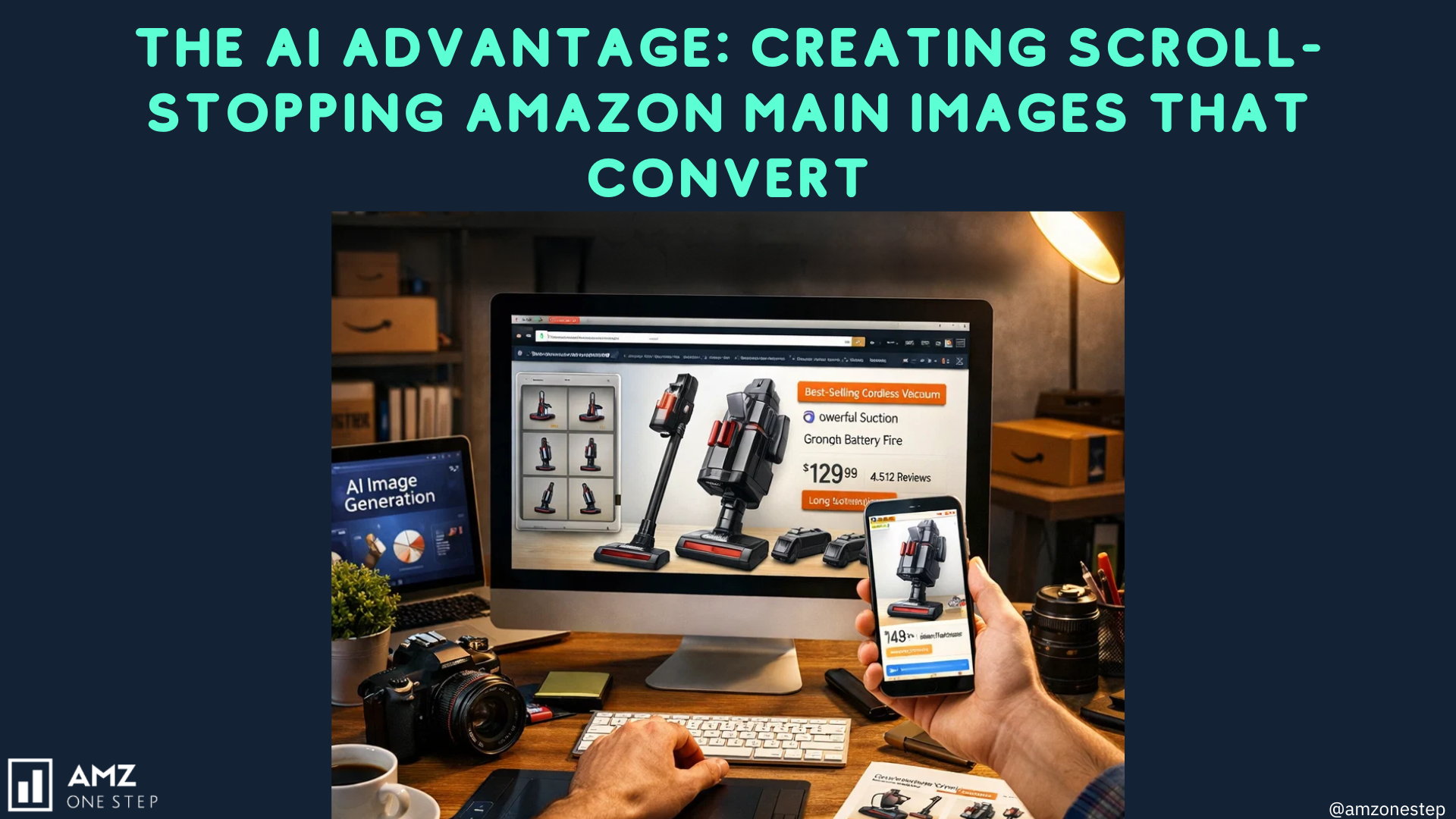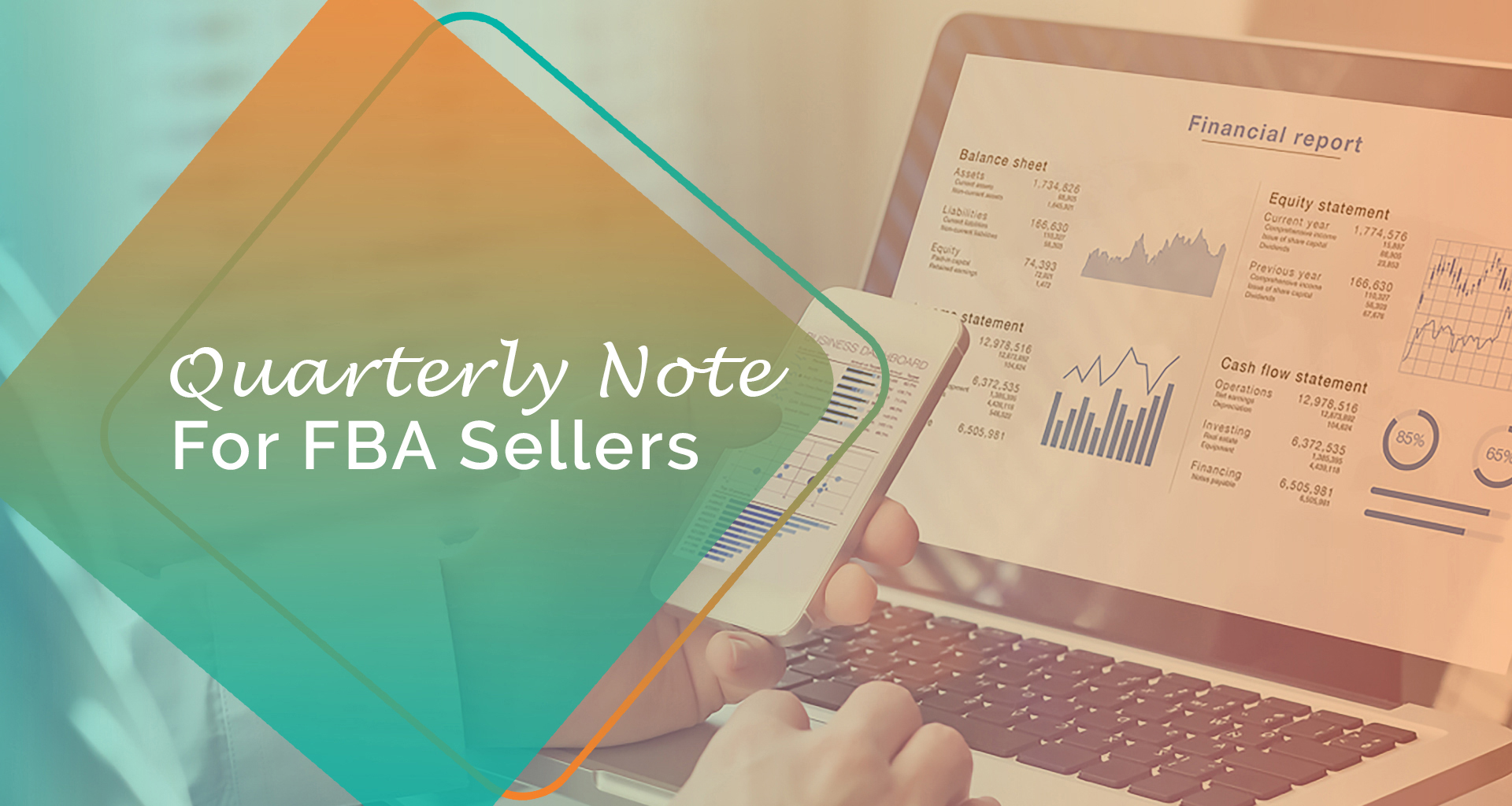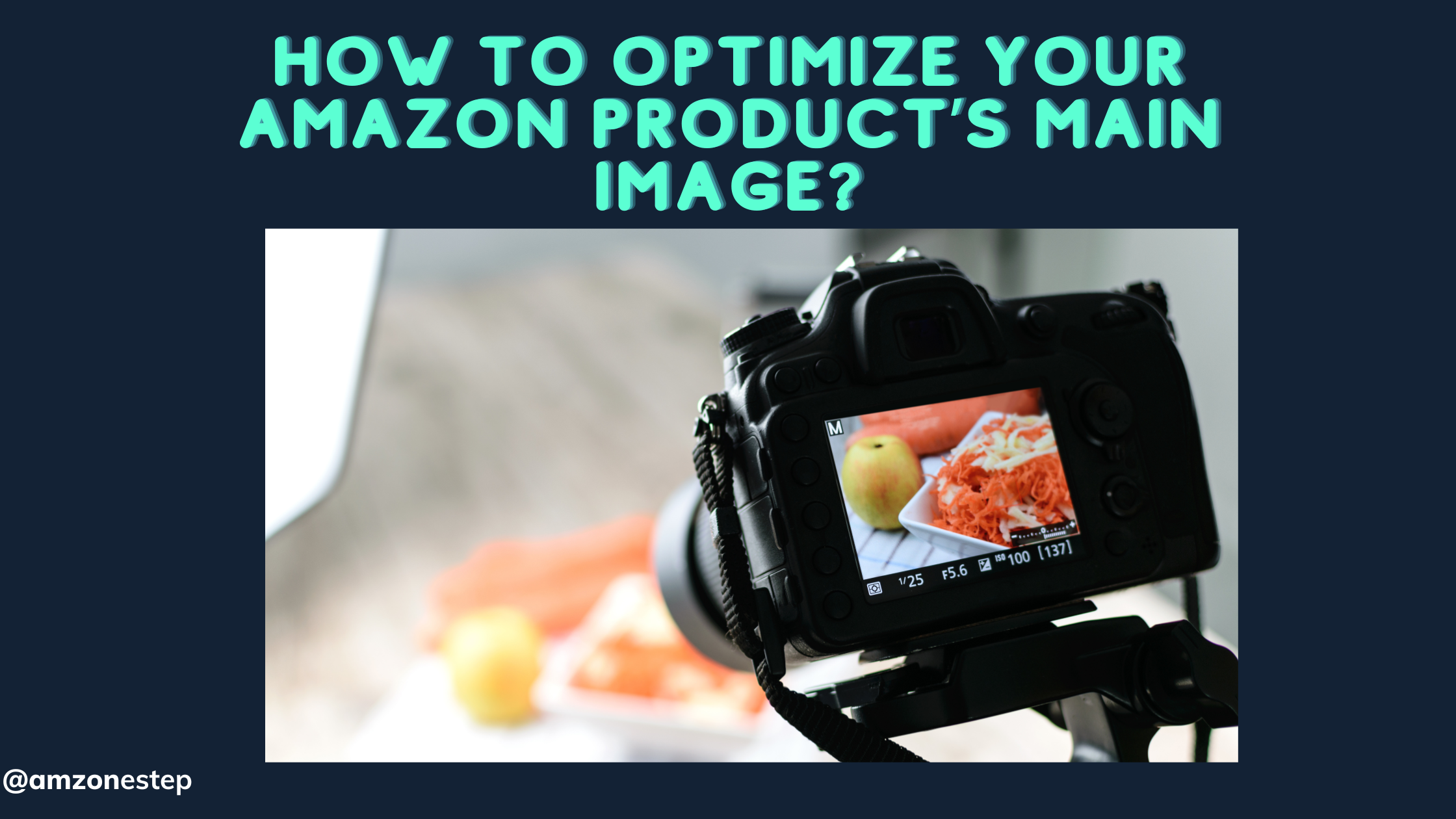The Amazon marketplace can seem like a jungle to get through because there are more than 350 million items for sale.
The huge size of Amazon’s catalog can be overwhelming for both sellers and buyers, even though the site gets a lot of traffic every day. Making your business stand out from the rest is very important if you want people to see your products and buy them.
We’ll talk about how to make your Amazon listing stand out and important ways to market your products in this article. If you use all of these strategies together, you’ll find the best way to make more sales and keep the Amazon cycle going. Are you ready to do something great with your listing? Now is the time.
Visibility for Brand Owners on Amazon
Currently, Amazon deals with both internal and external traffic. You have to work hard to get people to buy your goods on Amazon and even harder to get people who are just looking to buy something.
Because there are so many Amazon FBA sellers and goods on Amazon, it’s important to be a brand owner and use the tools that Brand Registry users can access.
This will help your items get the Buy Box, give you access to marketing tools like Brand Stores and A+ pages to show off your goods, and keep fakes and copycats away from your brand and your customers.
Amazon Listing for International Markets
Localize Product Titles and Descriptions
Localization goes beyond simple translation. It involves adapting your product titles, descriptions, and bullet points to suit the language, cultural nuances, and shopping habits of the target market. This makes your listing images more relatable and understandable to local customers.
Example
If you are selling a vacuum cleaner in Germany, translating “powerful vacuum cleaner” to “starker Staubsauger” is a start, but you should also consider the German preference for energy efficiency.
Including phrases like “energieeffizient” (energy-efficient) in your description can make your product more appealing to German consumers.
Use High-Quality Localized Images
Visual content is universally important, but preferences for image styles and formats can vary by region. Localizing your images by using models, settings, or even product variants that resonate with the local audience can make your listing images more appealing.
Example
If you are selling outdoor gear in Japan, featuring listing images that showcase the product in local settings or landscapes, like Japanese mountains, can make your listing more relatable to Japanese consumers. Additionally, using local models can help build a stronger connection with your audience.
Leverage Amazon’s International Selling Tools
Amazon offers several tools and services to help Amazon FBA sellers expand globally. These include the Amazon Global Selling program, which allows you to manage multiple marketplaces from a single account, and Amazon’s FBA Export, which handles international shipping and logistics on your behalf.
Example
By enrolling in Amazon’s Global Selling program, you can easily list your products on multiple international marketplaces, including Amazon UK, Germany, Japan, and more.
Additionally, using FBA Export can help you streamline the shipping process, ensuring that your products reach international customers quickly and efficiently.
Start with SEO Keywords
If you want to do well on Amazon, you need to focus on SEO more than on Google. List optimization is all about making sure that your goods are easy for people to find.
Do some research on the terms people might use to find your products on Amazon to make your listing stand out. Long-tail and short-tail terms should both be covered in detail. Something clear, like the main search term for your goods, is a short-tail keyword. Say “earrings” for example.
You could also use search phrases like “jewelry,” “earrings for women,” etc. that are easy to remember if you’re selling gold earrings. For the second line of defense, use long-tail terms. They might not bring in a lot of people, but they will bring in users who are very interested in buying exactly what you’re selling.
For instance, “tiny gold earrings for women”; These phrases should be used in your product ad once you have a list of them. Title, bullet points, product description, and backend keywords should all have these terms in them.
Optimize the 249-byte Limit
Amazon allows you to enter up to 249 bytes of backend keywords. To make the most of this limited space, avoid repeating words, and use single spaces between keywords. There’s no need to use punctuation or capitalization. Focus on including as many relevant and high-value keywords as possible.
Example
Instead of inputting “yoga mat, non-slip yoga mat, eco-friendly yoga mat,” simply list “yoga mat non-slip eco-friendly workout fitness pilates” to save space and include more keyword variations.
Include Misspellings and Synonyms
Customers often make spelling mistakes when searching for products. Including common misspellings and synonyms in your backend keywords can help capture those searches without cluttering your public-facing content.
Example
For a product like “dumbbells,” you could include common misspellings like “dumbells” or “dumbbells weights” in your backend keywords. Similarly, you can add synonyms like “weights,” “free weights,” or “gym weights” to capture a broader audience.
Avoid Prohibited Terms
Amazon has strict guidelines about what can and cannot be included in your backend keywords. Prohibited terms include competitor brand names, abusive or offensive language, and irrelevant keywords. Violating these rules can lead to your listing being suppressed or even account suspension.
Example
Do not include the brand names of competitors like “Nike” or “Adidas” in your backend keywords, even if you think it will drive more traffic. Amazon may consider this keyword stuffing and could penalize your account.
Read More: How AI Can Help You Sell on Amazon
Use All Available Fields
Amazon provides multiple fields for you to input keywords, including search terms, intended use, target audience, and subject matter. Ensure that you use all of these fields to fully optimize your product’s visibility. Each of these fields should contain relevant keywords that describe your product’s features and potential uses.
Example: For a children’s book, you could fill out fields like:
- Search Terms: “children’s book bedtime stories”
- Intended Use: Nighttime reading”
- Target Audience: “toddlers, preschoolers”
- Subject Matter: Bedtime, sleep, family”
Avoid Keyword Stuffing
While it might be tempting to cram as many keywords as possible into your backend fields, keyword stuffing can harm your listing’s performance. Amazon’s algorithm favors relevant and well-structured content, so make sure your keywords are directly related to your product.
Example
If you are selling a yoga mat, do not include unrelated keywords like “kitchen appliances” just to fill up the space. This can confuse Amazon’s algorithm and reduce your product’s visibility.
Prioritize Your Product Images
A picture is worth a thousand words, so make sure to work on your product pictures while you fill out your listings with great keywords and interesting facts about what you sell.
In the year 2024, 95% of people shop on their phones. Because they are higher up and easier to see on the Amazon app, product pictures are very important for getting people to buy.
Make sure that your main picture is high-resolution, clear, and does a good job of showing off your product without breaking Amazon’s rules.
Once your main picture is organized, don’t just use one or two simple pictures on your ads. Use the seven picture slots (or even better, six images and one video) to really show off all of your product’s best features.
Make visuals with text callouts, measurements, certifications, and some information about your brand to bring your brand and product to life.
Best Practices for Amazon Product Videos
- Amazon product videos should be concise and engaging, typically ranging from 30 seconds to 2 minutes. Focus on key features and benefits, and make sure the product video is dynamic and visually appealing.
- Example: For a portable blender, create short videos demonstrating its ease of use, portability, and the convenience it offers for making smoothies on the go.
Show the Product in Action
- Demonstrate how the product works and highlight its main features in the video. Showing the product in action helps customers understand its functionality and benefits.
- Example: If you are selling a high-performance vacuum cleaner, show the vacuum in action cleaning different types of surfaces and removing various types of debris.
Include a Clear Call-to-Action
- Encourage viewers to take action by including a clear call-to-action at the end of the video. This could be to visit your Amazon listing, make a purchase, or learn more about the product.
- Example: End your video with a message like “Visit our Amazon store now to get your new blender and start making delicious smoothies today!”
Stay in Stock to Sell More
Unless your product is in stock and priced fairly, you can’t expect to get to the top of the search results or win the Buy Box. This is the best way for sellers to ship their goods to customers: Fulfillment by Amazon (FBA). Amazon takes the blame instead of punishing you if something goes wrong.
Always keep an eye on your Amazon account and stock amounts. Your goods will always be in stock if you send small, regular shipments to Amazon fulfillment centers. This way, you won’t have to pay long-term storage fees.
Finally, you need to make sure you have enough stock to cover expected sales plus more. Things like Q4, Prime Day, and other busy times for your business make this even more important.
The Role of Shipping Speed
- When customers receive their orders quickly, it enhances their overall satisfaction. Fast shipping meets the expectation set by the convenience of online shopping and contributes to a positive experience, leading to repeat purchases.
- Slow shipping times are one of the main reasons for cart abandonment. If customers see that their order will take too long to arrive, they might choose to buy from another seller or platform that offers quicker delivery. By offering faster shipping options, Amazon FBA sellers can significantly reduce the likelihood of cart abandonment.
- Shipping speed can also affect product reviews. Customers who receive their items promptly are more likely to leave positive reviews, while delays can lead to negative feedback, even if the product itself is satisfactory.
- Fast and reliable shipping can increase brand loyalty. Customers who have a positive shipping experience are more likely to return to the same seller for future purchases. On Amazon, where multiple sellers often offer the same product, shipping speed can be a key differentiator.
Read More: How to Optimize Your Amazon Product’s Main Image?
Get More Traffic To Your Amazon Listings
Amazon’s system works in cycles. If people find your page, buy your products, and give you good reviews, Amazon will make sure that other people can find your offering. If your page is well-optimized and has a good image, more people will definitely check out your items instead of those from other sellers.
Once your listing is ready for retail, use what you’ve learned to get people to your goods. Here are good ways to do that:
Amazon Advertising
One of the most effective ways to get started with Amazon Advertising is by using Sponsored Products. This advertising format places your product listings at the top of Amazon search results and in other prominent locations across the platform, making them highly visible to potential customers.
The strategy behind using Sponsored Products is to reinforce the keywords you’re already targeting in your search engine optimization (SEO) efforts. For example, if you sell organic skincare products, you might be focusing on keywords like “natural face moisturizer” or “organic sunscreen” in your SEO strategy.
By creating Sponsored Products ads with these keywords, you can ensure your products appear at the top of the search results when customers look for these terms, thereby increasing the likelihood of clicks and conversions.
What makes Sponsored Products particularly effective is that many customers don’t even realize they are interacting with ads. The ads are seamlessly integrated into the search results, making them look like any other product listing, which can lead to higher engagement and more sales. However, it’s important to keep a close eye on your ad spend.
If you’re not careful, advertising costs can quickly eat into your margins, especially if you’re bidding on highly competitive keywords. To manage this, start with a modest budget, analyze your return on ad spend (ROAS), and adjust your bids and keywords accordingly.
For instance, if you notice that certain keywords are driving a lot of clicks but not resulting in sales, you might want to reduce your bid on those terms or explore other, less competitive keywords that might offer a better return.
On the other hand, if you find that a particular keyword is generating significant sales, it might be worth increasing your bid to capture even more traffic.
Users of the Amazon Advertising Brand Registry can set up an Amazon store that will serve as a hub for their brand. When your goods are ready to sell, put them in a Brand Store to cross-sell other things and build your brand’s reputation.
Sponsored Brand efforts are another way to get people to visit your store. This is an excellent way to get people to visit your Amazon ads.
Drive Social Media Traffic
Driving social media traffic to your Amazon pages is an increasingly vital strategy as users spend significant amounts of time on platforms like Instagram, Facebook, TikTok, and others. Building a strong presence on these platforms allows you to directly connect with your target audience and direct them to your Amazon listings.
For instance, if you’re selling stylish home décor items, regularly posting engaging content on Instagram—such as aesthetically pleasing photos of your products in stylish home settings, behind-the-scenes looks at your production process, or home décor tips—can attract potential customers.
Using relevant hashtags and engaging with your audience through comments and direct messages can further increase your reach and drive traffic to your Amazon pages.
To amplify your efforts, consider partnering and find the influencers who align with your brand. For example, if you sell fitness gear, collaborating with popular fitness influencers on TikTok can help showcase your products in action and encourage their followers to check out your Amazon listings.
Influencers can create authentic content that highlights the benefits of your products, providing social proof and driving their audience to your Amazon pages.
Additionally, utilizing features like Amazon Posts—Amazon’s in-platform social feed where you can share branded content directly—can keep your products in front of potential buyers while they browse.
Run A Promotion
Deals on your goods don’t have to be hard, and your prices should be set up to make them easy to do. This is a great way to make your goods stand out in search results, especially if the coupon or discount code can be shared on social media, your website, etc.
An icon that looks like a badge makes even a small deal (like $3 off a $30 item) more visible in search results.
Product Badges (e.g., Bestseller, Amazon’s Choice)
- Bestseller: Indicates that a product is among the top Amazon FBA sellers in a particular category.
- Amazon’s Choice: Marks a product that is highly rated and well-priced in a specific category or for a particular search query.
- Top Rated: This shows that the product has received high ratings from customers.
- Prime: Indicates that the product is eligible for Amazon Prime’s fast shipping benefits.
These badges are awarded based on various factors such as sales volume, customer ratings, and price competitiveness.
Increased Conversion Rates
Having a badge on a product listing can improve conversion rates. When customers see that a product is popular or highly rated, they are more likely to make a purchase. Badges help reinforce the value proposition of a product, making it easier for customers to make a buying decision.
- Example: A “Bestseller” badge on a “kitchen blender” suggests that many other customers have purchased and liked it, which can persuade new customers to buy it as well, thus increasing the conversion rate.
Increased Visibility and Click-Through Rates
Product badges can significantly increase a product’s visibility. When shoppers search for products on Amazon, they often encounter numerous listings. A badge like “Amazon’s Choice” or “Bestseller” immediately attracts attention and makes a product stand out from the competition.
This enhanced visibility can lead to higher amazon click-through rates (CTR), as customers are more likely to click on listings with these badges.
- Example: A search for “wireless headphones” might return hundreds of results. Among them, a listing with the “Amazon’s Choice” badge for “wireless headphones” will likely draw more clicks than other listings without the badge, simply due to its prominent positioning and perceived endorsement.
Test titles, Bullet Points, and A+ Content
There are two versions of material called A and B. You can compare them in Seller Central to see which one sells more. Putting your images and titles to the test can help you do better and stand out in search results.
You can try different versions of A+ content to see which one works best. Do this if you believe your content is already optimized as much as it can be. Use what you’ve learned across your whole catalog.
Preferably avoid using the same keywords more than once in your title. Additionally, Amazon has said that you only need to use a keyword once in an offering, and that using it more than once does not make it more valuable.
- Furthermore, as stated in their Terms of Service, keywords are connected to customer search questions by fully or partially overlapping keywords. You can write more about your product in the product description, which is further down the page with product details.
- You can use up to 2,000 characters in the description, so it’s best to go over the features and benefits you wrote about in the bullet points again, but this time in more depth.
- With HTML tags, buyers used to separate paragraphs, make text bold, and add bullet points. Amazon no longer lets you do this, which is a shame.
- While adding keywords to the product description is still important, it’s also important to add a copy to it so that customers can learn more about your business and product.
- You can make something called an “A+ Content Description” if you signed up for the Brand program. This will be used instead of your current description, and you can add your own themes, big pictures, and more.
Tips on how to write great bullet points for Amazon:
- Focus on the main benefit or feature in the first part of the bullet.
- Provide a more complete description.
- Detail the main feature of the product and how it will help the buyer.
- Describe how your product helps the client resolve their issue.
- Don’t forget to include important product details like number, size, colors, and materials.
- Write attractive copy to persuade people they need this offering.
- Make it clear why your product is better than others.
Knowing Amazon’s rules for the product information page is important before you write your title.
Conclusion
In the vast ocean of Amazon listings, small tweaks can be the magic breadcrumbs that lead customers straight to your product. It’s like turning a tiny sailboat into a speedboat with just a few adjustments—suddenly, you’re racing past the competition.
So, whether it’s revamping your product title, polishing up those bullet points, or sprinkling in some dazzling images, remember: tiny changes can lead to colossal results. It’s time to roll up your sleeves and get tweaking—because the sales treasure chest might just be a few tweaks away!

Hi there! I’m the content marketing and branding specialist for AMZ One Step. I work hard to create engaging and informative content that helps our readers learn more about Amazon selling and how to make the most of their businesses. I love spending time with my family and exploring literary works when I’m not writing or working on projects.




























